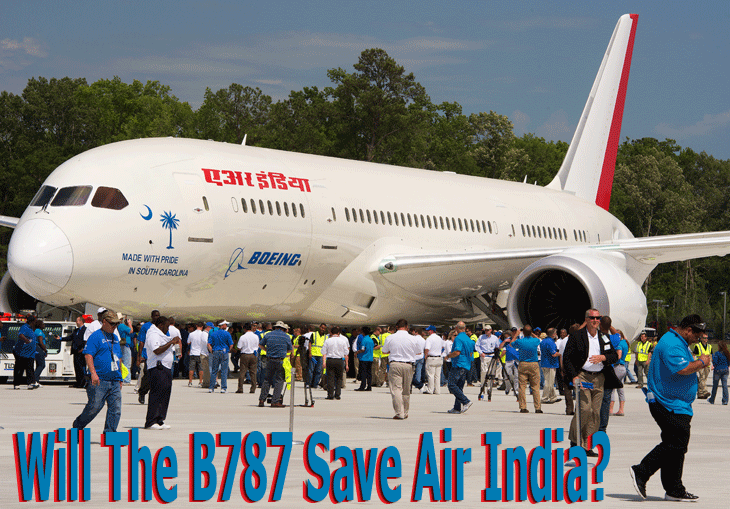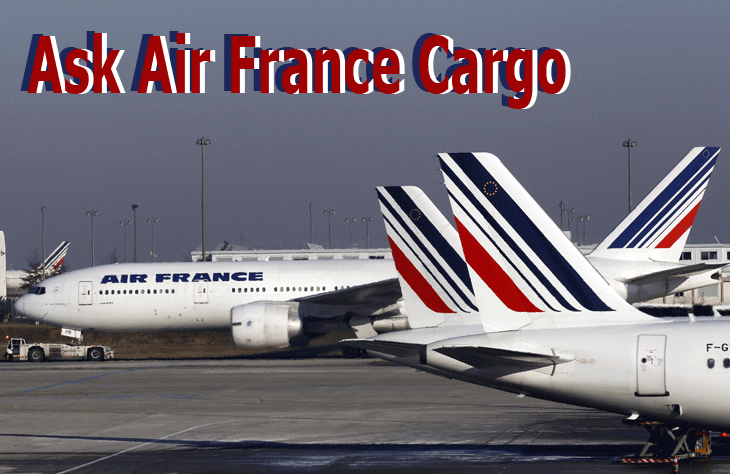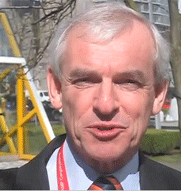
Air India’s management has—it
seems—found the last ‘magic’ straw that could help
the carrier: the Dreamliner. The aircraft has been at the center of
controversy and even spawned one of the longest pilot strikes (58
days) in recent memory. However, the strike is now history and a number
of the striking pilots have joined duties and the carrier is waiting
for its first three fuel-efficient B787s later this month. By the
end of the year, six more are supposed to join the fleet; by the end
of March 2013, eight more are expected. Incidentally
Air India ordered 27 of the B787s in 2006, with the first ones joining
the fleet in 2008.
According to sources at Air India, the
carrier has plans to dispose of five of its B777s. The Dreamliners
will then be utilized on some of the key routes—that have been
losing money—where the B777s were operating, like London, Europe,
and the Far East. Apparently, the planes will save around 20-30 percent
fuel.
Other reports from Air India headquarters
suggest that the Dreamliner will first operate on domestic routes
and once the pilots are more proficient (around 60 of them have been
undergoing training), the planes will be allowed to fly abroad. The
question that is being asked is: will the induction of the Dreamliners
for domestic flights make a difference to Air India’s dwindling
marketshare? In the latest figures released by the Directorate General
of Civil Aviation (DGCA), Air India’s domestic passenger load
factor was 71.3 percent (May: 70.6 percent) while that of IndiGo was
86.5 percent (it was 86.3 percent in May).
A 58-day strike by pilots resulted in
a Rs. 200 crore revenue loss for the carrier. The strike started with
the demands of some pilots that Dreamliner training be restricted
to pilots from Air India, which in 2007 merged with state-run Indian
Airlines to form a new entity called National Aviation Co.
One wonders if the Dreamliners alone
can save Air India. If the management does not clear the problems
within the organization, which basically stem from the merger of Indian
Airlines with Air India, the carrier will continue to dodder on. Today,
the headquarters is a virtual battleground of disgruntled employees
with no one from either of the carriers—Air India or Indian
Airlines—feeling happy. While a segment of the Air Indians wants
restoration of pride and dignity, the officers from the Indian Airlines
have demanded that arrears, among other dues, must be settled first.
The General Cadre of the Air India (most
of them from Marketing and Sales) has shot off a representation sometime
ago to Sayed Nasir Ali, Chairman, Implementation & Anomaly Rectification
Committee. The committee was set up after management found out that
there were “serious objections” to the report of the Expert
Committee on HR issues of Merged Air India, which had been submitted
to the Ministry of Civil Aviation on January 31, 2012, headed by Justice
D. M. Dharmadhikari.
The representation made it clear that
the General Cadre employees “have no personal grudges against
our colleagues from erstwhile IC (Indian Airlines), although they
have been getting higher salaries/promotions/career progression, etc”
but what will be “difficult to accept” would be the loss
of dignity and status. The aggrieved Air India employees (many of
them have spent between 15 and 30 years with the company) have sent
out a fervent appeal to the management to “safeguard our dignity.”
However, even before the Air Indians
sent their note, the Indian Airlines officers, represented by the
Indian Airlines Officers Association, also sent out a protest note
to the same Sayed Nasir Ali complaining about non-payment of arrears
to recommending the retirement age of 60 years from the present 58,
for only those employees who “perform.”
With such dissatisfaction brewing among
employees from the Air India and Indian Airlines, one wonders if the
country’s national airline will ever be able to get back its
glory days. For the moment, however, the tussle among the staff over
seniority and a whole range of issues will continue to have a deep
impact on the functioning of the carrier.
Tirthankar Ghosh |





 Air
France-KLM-Martinair Cargo has launched a new freighter lane between
Amsterdam and Mumbai (BOM) and between Amsterdam and Kuwait (KWI).
Air
France-KLM-Martinair Cargo has launched a new freighter lane between
Amsterdam and Mumbai (BOM) and between Amsterdam and Kuwait (KWI). No
one need stand atop the Tour Eiffel to shout out that 2012 is a business
year better off forgotten.
No
one need stand atop the Tour Eiffel to shout out that 2012 is a business
year better off forgotten.
 At
a second meeting in early June between the Lifesciences Steering
Group and the Indian pharma, the focus of airline representatives
and others moved to the role of Schiphol in the pharma supply chain
and the creation of a lifesciences supply chain strategy, as well
as development of a similar program that will involve the lifesciences
trade elsewhere, including the USA.
At
a second meeting in early June between the Lifesciences Steering
Group and the Indian pharma, the focus of airline representatives
and others moved to the role of Schiphol in the pharma supply chain
and the creation of a lifesciences supply chain strategy, as well
as development of a similar program that will involve the lifesciences
trade elsewhere, including the USA. The
importance of the meet can be gauged from the fact that it was moderated
by Enno Osinga, (right)Senior Vice President Cargo of Amsterdam
Airport Schiphol.
The
importance of the meet can be gauged from the fact that it was moderated
by Enno Osinga, (right)Senior Vice President Cargo of Amsterdam
Airport Schiphol. 



